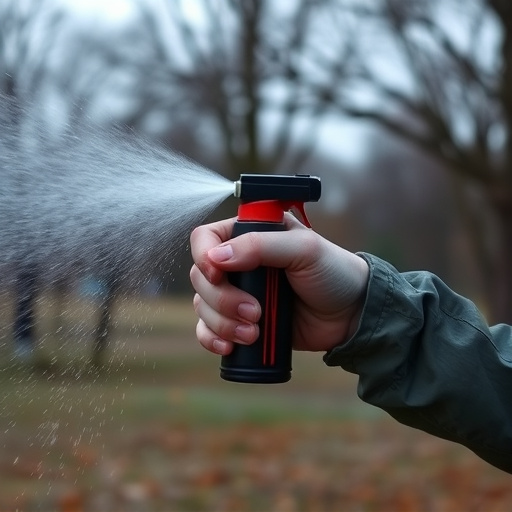Understanding and managing pepper spray expiry dates is crucial for effectiveness and safety. After expiration, chemical breakdown reduces potency, necessitating proper disposal as hazardous waste to avoid environmental harm. Avoid pouring expired pepper spray down sinks or toilets; instead, seal canisters, drop them off at designated locations, contact local authorities, or visit hazardous waste facilities. Correct handling, de-escalation techniques, public education, and regular expiration date checks ensure optimal performance during crowd control operations.
In the realm of crowd control, pepper spray is a widely utilized tool by law enforcement. However, understanding its expiry date and proper disposal methods are crucial aspects of responsible handling. This article delves into the intricacies of managing expired pepper spray, offering insights on safe disposal techniques and preventing misuse through expert tips. Learn how to navigate this process effectively, ensuring both safety and environmental responsibility, especially when it comes to disposing of expired pepper spray.
- Understanding Pepper Spray's Expiry Date
- Safe Disposal Methods for Expired Spray
- Preventing Misuse: Responsible Handling Tips
Understanding Pepper Spray's Expiry Date
Pepper spray, a common tool in crowd control and self-defense, has a limited shelf life. Understanding its expiry date is crucial for both law enforcement agencies and individuals who possess it. While pepper spray’s effectiveness decreases over time, proper storage can significantly extend its lifespan.
When pepper spray expires, it loses potency due to chemical degradation. How do you know when it’s no longer effective? Check the manufacturer’s label for an expiry date or expiration indicator. Once this date is passed, it becomes important to dispose of the expired pepper spray responsibly. The correct disposal method varies depending on local regulations, but generally, it should be handled as hazardous waste and not disposed of in regular trash to prevent any potential risks or harm to others.
Safe Disposal Methods for Expired Spray
When pepper spray reaches its expiration date, it’s crucial to dispose of it properly to ensure safety and avoid environmental contamination. The first step is to never empty or discharge the expired spray into sinks, toilets, or any water sources, as this can cause severe damage to plumbing systems and pollute water bodies.
Instead, follow these recommended methods: 1. Contact your local police department or hazardous waste facility for guidance on drop-off locations; 2. Seal the expired canister tightly in a plastic bag; 3. Place it in outdoor trash bins designated for hazardous waste; 4. Never throw expired pepper spray into regular trash, as it could still be active and pose risks to garbage collectors.
Preventing Misuse: Responsible Handling Tips
Preventing misuse and ensuring responsible handling of pepper spray is crucial for crowd control effectiveness and public safety. Police departments should provide comprehensive training to officers on its correct use, including scenarios and techniques. This includes demonstrating how to aim, activate, and de-escalate situations efficiently. Moreover, educating the public about pepper spray’s potential risks and benefits can foster understanding and responsible usage.
When it comes to expired pepper spray, proper disposal is essential to prevent environmental contamination and health hazards. Users should refer to the product label for guidance on disposal methods, which may include flushing or recycling specific components according to local regulations. Regularly checking expiration dates and replacing supplies ensures optimal performance during crowd control operations.
Police pepper spray is a powerful tool, but understanding its expiry date and responsible disposal methods are crucial for both safety and legal compliance. Proper handling and safe disposal, as outlined in this article, including how to dispose of expired pepper spray, are essential steps to prevent misuse and ensure the well-being of communities. Remember, knowledge is key in navigating crowd control measures effectively and responsibly.
